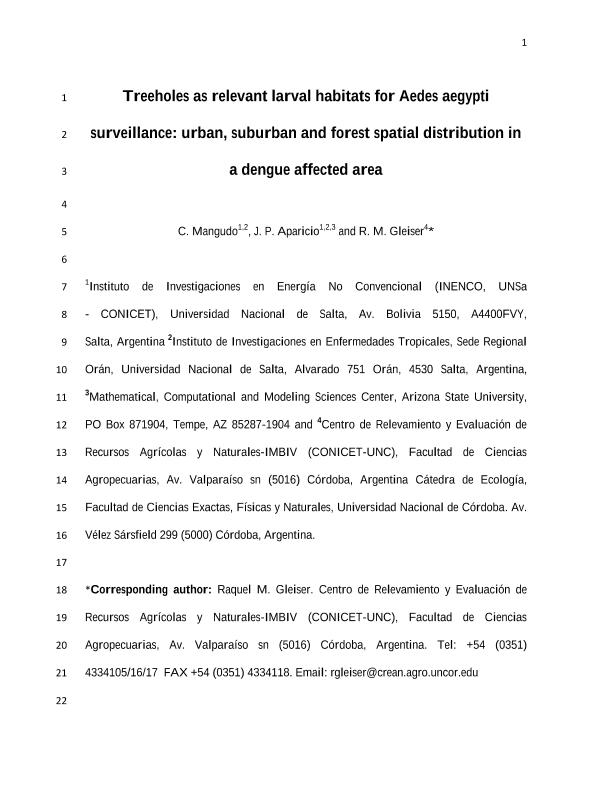Artículo
Tree holes as larval habitats for Aedes aegypti in urban, suburban and forest habitats in a dengue affected area
Fecha de publicación:
09/2015
Editorial:
Cambridge University Press
Revista:
Bulletin Of Entomological Research
ISSN:
0007-4853
e-ISSN:
1475-2670
Idioma:
Inglés
Tipo de recurso:
Artículo publicado
Clasificación temática:
Resumen
Aedes aegypti (L.) (Diptera: Culicidae), the main vector of dengue and urban yellow fever in the world, is highly adapted to the human environment. Artificial containers are the most common larval habitat for the species, but it may develop in tree holes and other phytotelmata. This study assessed whether tree holes in San Ramón de la Nueva Orán, a city located in subtropical montane moist forest where dengue outbreaks occur, are relevant as larval habitat for Ae. aegypti and if the species may be found in natural areas far from human habitations. Water holding tree holes were sampled during 3 years once a month along the rainy season using a siphon bottle, in urban and suburban sites within the city and in adjacent forested areas. Larvae and pupae were collected and the presence and volume of water in each tree hole were recorded. Finding Ae. aegypti in forested areas was an isolated event; however, the species was frequently collected from tree holes throughout the city and along the sampling period. Moreover, larvae were collected in considerably high numbers, stressing the importance of taking into account these natural cavities as potential reinfestation foci within dengue control framework.
Palabras clave:
Culicidae
,
Landscape
,
Phytotelmata
,
Population Ecology
,
Vector
Archivos asociados
Licencia
Identificadores
Colecciones
Articulos(INENCO)
Articulos de INST.DE INVEST.EN ENERGIA NO CONVENCIONAL
Articulos de INST.DE INVEST.EN ENERGIA NO CONVENCIONAL
Citación
Mangudo, Carolina; Aparicio, Juan Pablo; Gleiser, Raquel M.; Tree holes as larval habitats for Aedes aegypti in urban, suburban and forest habitats in a dengue affected area; Cambridge University Press; Bulletin Of Entomological Research; 105; 6; 9-2015; 679-684
Compartir
Altmétricas




